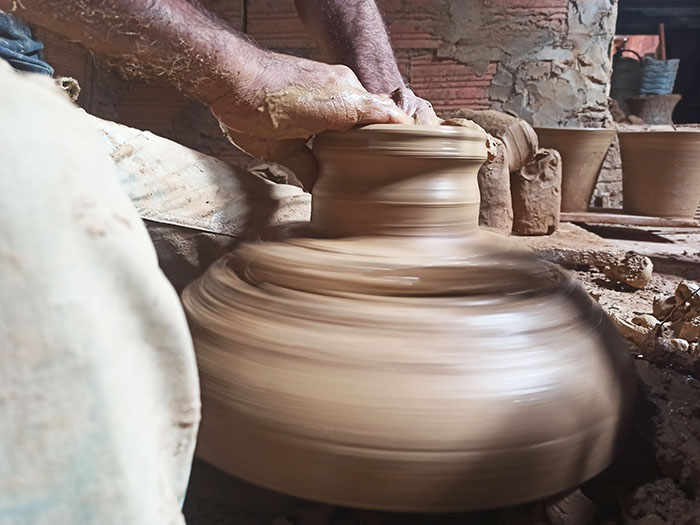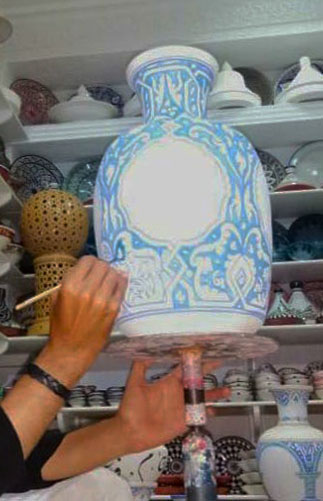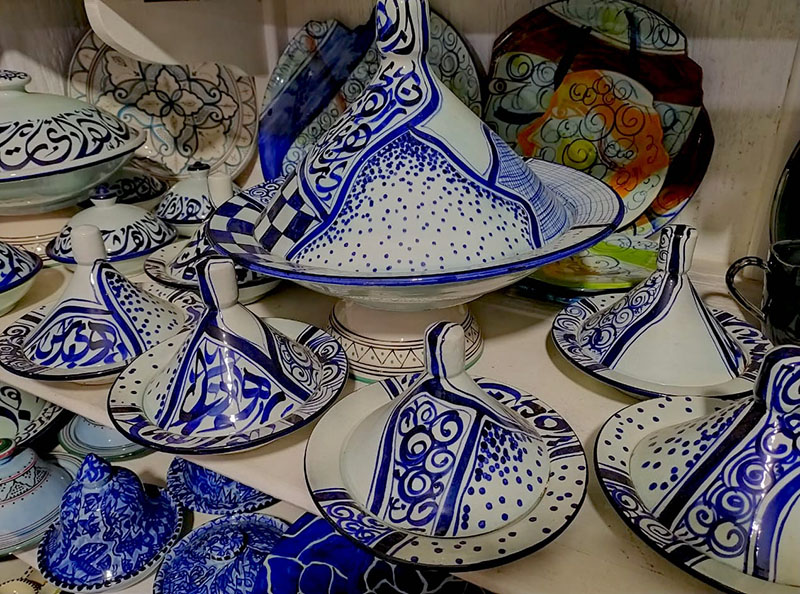HISTORY
Pottery is rooted in Moroccan history and culture: passed down through generations and introduced by the Moors more than 10 centuries ago with the installation of the first kilns in Fez, Meknes, Safi and Marrakech.
In the ceramics industry, Morocco ranks among the top 21 producers worldwide.
Moroccan pottery is distinguished by its styles and techniques according to the regions:
the city pottery: produced mainly in Fez, Salé and Safi, the pottery of the South also known as rural pottery and Berber pottery known by its simplicity and its naturalness.
Among the famous potteries of Morocco, there is the famous pottery of Tamegroute and the female pottery of the Rif.
Some potteries are distinguished by their very particular colors and their very artistic motives, it is the case of the pottery of Fez known by its cobalt blue and the splendid green of the pottery of Tamegroute, the pottery of the North as for it is famous by its inspiration of the Islamic inheritance and the Arab culture.

TECHNIQUES AND KNOW HOW
The main material used for pottery remains clay, known in Morocco by its quantity and quality, but the processes and techniques vary according to the regions and the nature of the clay: in the region of Jbâla for example, pottery is also made from cow dung, unfired clay or a mixture of these. The clay is first dried in the sun, wet to be kneaded and worked by hand, then rested for several days before giving it a shape for a material aspect.
The potters generally work on foot, except for the potters of the Rif who use their hands.
Traditional kilns are also used for firing pottery, programmed for a duration of 6 hours at a temperature exceeding 850 degrees, then cooled before being decorated or left in its natural state.
Some potteries like those of Salé use a double firing technique.

NEWS
With the new trends, Moroccan pottery had to face new challenges and develop new concepts in order to adapt to the new requirements of the utilitarian and decorative market, while preserving its originality and authenticity.
In order to enhance this heritage and share this ancestral art, the National Museum of Ceramics gathers an important collection of pottery and ceramic objects from Morocco.
These objects of archaeological and ethnographic nature come mainly from the national museums of the National Foundation of Museums: Archaeological Museum of Tetouan, Museum of the Casbah in Tangier, Museum of History & Civilizations, and Museum of the Oudayas in Rabat, Dar Jamai of Meknes, Dar Si Said of Marrakech, and Al Batha of Fez.
Real works of art to discover!
